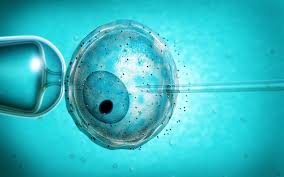
Breaking News
 China Will Close the Semiconductor Gap After EUV Lithography Breakthrough
China Will Close the Semiconductor Gap After EUV Lithography Breakthrough
 The Five Big Lies of Vaccinology
The Five Big Lies of Vaccinology
 Large global study analyzing data from 192 countries has sparked intense debate by suggesting...
Large global study analyzing data from 192 countries has sparked intense debate by suggesting...
Top Tech News
 EngineAI T800: Born to Disrupt! #EngineAI #robotics #newtechnology #newproduct
EngineAI T800: Born to Disrupt! #EngineAI #robotics #newtechnology #newproduct
 This Silicon Anode Breakthrough Could Mark A Turning Point For EV Batteries [Update]
This Silicon Anode Breakthrough Could Mark A Turning Point For EV Batteries [Update]
 Travel gadget promises to dry and iron your clothes – totally hands-free
Travel gadget promises to dry and iron your clothes – totally hands-free
 Perfect Aircrete, Kitchen Ingredients.
Perfect Aircrete, Kitchen Ingredients.
 Futuristic pixel-raising display lets you feel what's onscreen
Futuristic pixel-raising display lets you feel what's onscreen
 Cutting-Edge Facility Generates Pure Water and Hydrogen Fuel from Seawater for Mere Pennies
Cutting-Edge Facility Generates Pure Water and Hydrogen Fuel from Seawater for Mere Pennies
 This tiny dev board is packed with features for ambitious makers
This tiny dev board is packed with features for ambitious makers
 Scientists Discover Gel to Regrow Tooth Enamel
Scientists Discover Gel to Regrow Tooth Enamel
 Vitamin C and Dandelion Root Killing Cancer Cells -- as Former CDC Director Calls for COVID-19...
Vitamin C and Dandelion Root Killing Cancer Cells -- as Former CDC Director Calls for COVID-19...
 Galactic Brain: US firm plans space-based data centers, power grid to challenge China
Galactic Brain: US firm plans space-based data centers, power grid to challenge China
Inside the Science Of The Engineered Human

Laura Niklason is one of those pushing this boundary. During a visit, I followed one of her postdocs into a refrigerated closet in her Yale University laboratories. He reached out to a shelf and took down a jar. Unlike the amorphous piece of heart muscle Gordana Vunjak-Novakovic had showed me, there was no mistaking what was floating inside this container. It was a perfectly preserved pair of rat lungs, taken from an actual animal and "decellularized."
Like those who are engineering simpler tissue, Niklason relies on physical forces and a chemical soup to replicate the native environment of the organ and coax stem cells to mature into the kind of tissue she desires when manufacturing lungs. But she came to believe early in her efforts that science did not yet offer the technology to construct an artificial scaffolding detailed enough to emulate the shape and architecture of a real lung, a complex structure as labyrinthine as a Minotaur's maze.

 This is why RAM costs so much
This is why RAM costs so much

